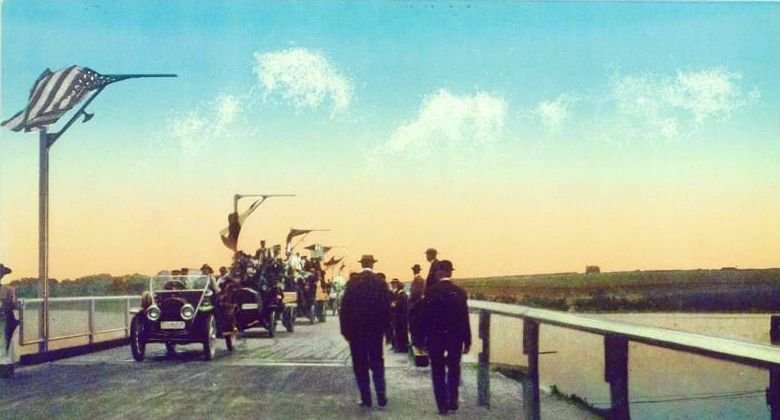Finding Inspiration in History
One of the challenges of writing historical fiction is finding inspiration in the past without succumbing to one of two things: either nostalgia, or the gothic. There always is the temptation to imagine your characters and your setting with something of a hazy glow, and to make every character’s intentions pure- be they good or bad. At the other end of the spectrum is the gothic, the dark and foreboding landscape of mystery and intrigue in which nothing is as vivid or vibrant as the present.
Each comes with its own benefits and pitfalls, and each tells a reader quite a bit about an author’s intentions from the very first word. Regardless, many readers wonder where authors find inspiration for stories that create such vivid mental images of the past. Sometimes it is as simple as that- an image, or picture, that is worth 1,000 words.
When I was writing my debut novel Memorial Day, it was a postcard from 1911 called “The Automobile Parade” that was worth almost 82,000 words to me. I found this postcard while I was researching the history of bridges across the Connecticut River. Even though it was not the inspiration for the story itself, it was a vivid reminder for me of the things that have changed in that part of the country since the beginning of the last century. More than that, it gave me a mental picture of how the one square block of town that Joe DaSilva occupies for most of the novel would have changed, and how he might have felt about it.
“The Automobile Parade” shows a town that is jubilant over a modest, but meaningful, feat of engineer that spans the river. To that point in time, there may have been only ferry service across the river. Rail lines would have terminated at the river bank, or turned North along the river. The bridge changed that and, interestingly, there seem to be as many people walking across the bridge as cars crossing. Most interesting to me was that the postcard appears to be a color photograph!
As a “reformed” historian, I had a vague notion that autochrome plates were relatively new, rare, and still expensive in 1911. If this were a photograph, and not a painting, it suggested to me that the opening of the bridge and “The Automobile Parade” must have been very big deals at the time.
Looking to the East bank of the river (or is it West?), it is easy to be tranquilized by the lush green fields on the horizon. However, anyone who knows the region would recognize that that those fields now are almost entirely forest. The rail depots, docks, and warehouses either have disappeared or have been replaced multiple times by other ventures. That is the natural cycle of things, and that is one of the central themes of Memorial Day.
Like the rising and falling ties, “The Automobile Parade” is evidence of the rising and falling fortunes of the small corner of the world that Joe DaSilva calls home. A fort was built and destroyed. A steamship company once boomed then went bust. The railroad, the Reese House, the Soundview Inn, even the first bridge- each had its moment, then time moved them to the side.
If you have grown up in an “historic” place, then you know that the pull of nostalgia is strong. If you have lived in a place or through a time that has experienced tragedy, you also know that the tendency toward the gothic can be equally powerful. It should not be at all surprising for a character like Joe DaSilva to say, “You don’t reminisce about things you’d rather forget.” The key to finding inspiration in the past, especially for a “reformed” historian like me, is to locate the story both for and in the characters.
A postcard like “The Automobile Parade” is only inspiring if it tells you something about the characters in your story- forget about the grand sweep of history. Could your characters have lived through the changes that inspired you? How might they have felt about it? How did it change their lives? And why would any reader care?
When I first looked at “The Automobile Parade,” I wanted to know what every single person, including the artist who captured it, thought they were doing in the moment. I also wondered, might they might have thought about that moment if they ever held this postcard in their hands. That’s one way to find inspiration in the past.
I would love to hear your thoughts, especially if you write or love to read historical fiction.
Check out Memorial Day at brendanwalshbooks.com, available soon on through all major booksellers.
